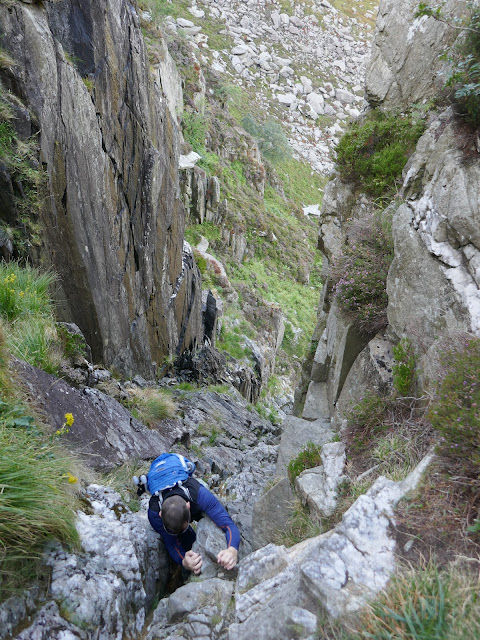This map was created using GPS Visualizer's do-it-yourself geographic utilities.
Please wait while the map data loads...
Route: Heatherdene, Ladybower dam, The Springs, Wiseman Hey Clough Plantation, Woodlands Valley, Hope Cross, Roman Road, Hope Brink, Thornhill Brink, Winhill Pike, Parkin Clough, Yorkshire Bridge, Heatherdene
Date: 18/08/2018
From: Heatherdene
Parking: Heatherdene
Start Point: Ladybower dam
Region: Peak District - Dark Peak
Route length: 7.9 miles (12.7 km)
Time taken: 02:50
Average speed: 2.8 mph
Ascent: 611m
Descent: 622m
Summits: Win Hill (462m)
Other points of interest: Ladybower, Hope Cross, Parkin Clough
I was in search of an easy day of hiking after wind and rain dashed any hopes of a decent weekend in the Lake District. After scouring the map searching for somewhere new I cast my eyes upon the Peak District - close to home but still offering the chance of new adventures. Despite an uninspiring forecast, I decided that Win Hill was deserving of my attention.
I parked up at Heatherdene which charges a respectable £3 for the entire day. Leaving the car park, I made my way along the road to the dam at the bottom end of Ladybower Reservoir, peering over the wall to have a look at the immense overflow that acts as a plug hole, although this one is on a much larger scale. A bridleway leads across the top of the dam holding back the water.
 |
| Ladybower and Crook Hill |
 |
| The Ladybower dam |
 |
| The earth dam and outlet structure |
 |
| Ladybower |
The packhorse bridge that stood near to the gates of Derwent Hall, which had a Preservation Order on it, was moved stone by stone and rebuilt at Slippery Stones at the head of the Howden Reservoir. All the graves in the churchyard were excavated and the bodies reburied in the nearby Bamford churchyard.
A few properties built on slightly higher land, including the Shooting Lodge and former Roman Catholic School, survived. But the majority were demolished and flooded, leaving the church spire eerily poking out above the waters. The flooding was completed in 1945, and the opening ceremony was carried out on Tuesday, September 25th 1945 by King George VI. Two years later the church spire was destroyed.
 |
| One of the two over overflows |
 |
| Ladybower dam |
 |
| The path at The Springs |
 |
| Crook Hill |
 |
| Ladybower western arm |
 |
| The River Ashop |
 |
| Trees close to Hagglee |
 |
| Woods near Hagglee |
 |
| The path up through the trees |
 |
| Approaching the Hope Cross through the dark woods |
 |
| Hope Cross |
 |
| Hope Cross |
 |
| Panorama from Hope Cross |
 |
| Cowms Moor |
 |
| The Great Ridge |
 |
| The Roman road leading towards Win Hill |
 |
| Kinder Scout |
 |
| Following the spine of the ridge |
 |
| Lose Hill and Edale |
 |
| Win Hill over Thornhill Brink |
 |
| Lose Hill and the Hope Valley |
 |
| Mam Tor |
 |
| Winnats Pass |
 |
| Win Hill Pike |
 |
| Win Hill's summit |
 |
| Panorama from Win Hill |
 |
| Stanage Edge and Bamford Edge |
 |
| Ladybower |
 |
| Crook Hill |
 |
| The path into the woods at Parkin Clough |
 |
| Parkin Clough |
 |
| The River Derwent |
 |
| Diagram of the Ladybower dam |
 |
| The dam itself |
 |
| The overflow once again |




















































